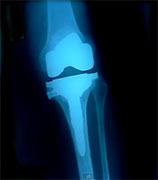
FRIDAY, Sept. 20 (HealthDay News) — A new system that provides unique labels to identify medical devices is being instituted by the U.S. Food and Drug Administration.
Called the unique device identification system (UDI), it will potentially improve the ability to identify devices that malfunction or cause harm to patients, enable faster targeted recalls and improve patient safety, agency officials said Friday.
“UDI may be an acronym for a unique device identification system, but what it really stands for is better information, better access to safe and effective medical devices, and, ultimately, better patient health,” Dr. Jeffrey Shuren, director of the FDA’s Center for Devices and Radiological Health, said during a late-morning press briefing.
This is a new way to identify medical devices throughout their distribution and use, he said. “Many medical devices will be required to have a code on their label, packaging or the product itself in plain text and machine-readable format — like a barcode,” Shuren said.
The system includes two parts. First, each device will be assigned a unique identification code number. “The code identifies the model and version of the device and provides production information such as lot number and expiration date,” Shuren said.
Second, the FDA will establish the Global Unique Device Identification Database, which will be a catalog of every device with an identifier. This database will be accessible by the public, but no patient-identifying information will be stored in the system, the agency said.
The unique device identification system will be phased in over time with so-called high-risk devices (Class III) the first to be listed. These devices include implanted pacemakers, defibrillators, artificial joints, heart valves and heart pumps.
Many devices considered low-risk will not have to be listed at all, according to the FDA.
When complete, the system is expected to benefit patients, the health care system and the device industry, the agency said in a news release.
The system will make it easier and faster to identify devices being recalled, improve the accuracy of reports of problems with devices, and provide a way to spot counterfeit devices, according to the FDA.
In addition, the system will make it easy to trace the use of devices in electronic health records and medical-information systems.
“We did this so that it would be easy to eventually link the use of a device with the patient’s experience with that device,” Shuren said.
This could be a valuable clinical resource, for assessing the benefits of medical devices in real-world use, “which will support not only safety, but innovation,” he said.
High-risk medical devices will be required to have unique device identifiers within one year, and the number and device information must be included in the new database.
For most Class II devices, such as powered wheelchairs, joint prostheses and infusion pumps, manufacturers will have three years to comply. For Class I devices not exempt from the rule, manufacturers will have five years, the agency said. Class I devices include items such as bandages, exam gloves and tongue depressors.
More information
For more about medical-device safety, visit the U.S. National Library of Medicine.
Copyright © 2026 HealthDay. All rights reserved.

